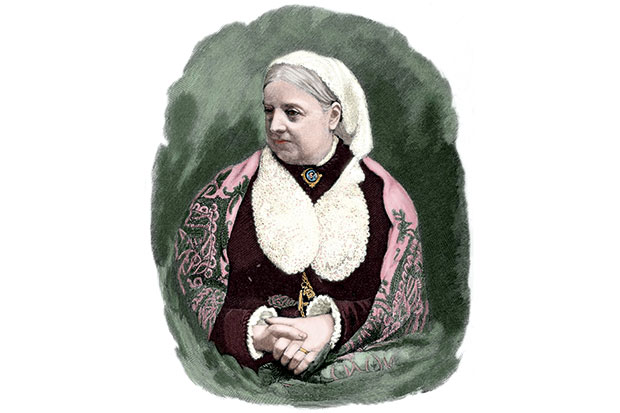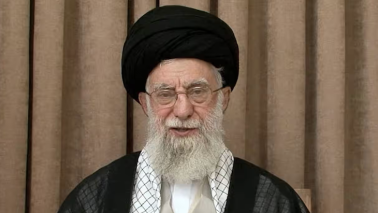One of the most interesting developments in modern publishing has surely been the revival of interest in women writers of the past. Beginning with Virago Press, publishers have delved back and rediscovered exceptional female writers from the 17th century onwards. These have either been rescued from oblivion, or from the frequent fate of being dismissed as middle-brow and narrowly domestic. Editors and a new generation of scholars have unearthed excellent writers, from Fanny Burney to Elizabeth Taylor, and have changed literary taste forever.
The success of the enterprise probably means that it is now easier to find a new readership for a once-popular female author than for a largely forgotten male author. The first generation of literary archaeologists had a traditional and rather strict criterion of literary quality. Carmen Callil, the founder of Virago, was very clear that there was a level beneath which those green-backed classics would not sink. Germaine Greer wrote an excellent and scrupulous book, Slip-shod Sibyls, arguing that many women poets of the past were actually very bad: they had no possibility of being otherwise.
Women writers may still need excavation, but it is crucial that critical judgment is preserved. The excellent work that Virago did — along with underrated investigators of particular fields, such as Roger Lonsdale, who produced an astounding anthology of 18th-century women poets for OUP — demonstrated what good writers these were. But if judgment is abandoned, we might reasonably question why we are being encouraged to read terrible writers on the basis of their sex alone.
Inquiring readers ought to be steered towards really good women writers. Elizabeth Inchbald’s A Simple Story is an exquisitely refined piece of work. Hardly anyone reads Hannah More. Susan Ferrier’s three novels are a delight. Maria Edgeworth clings on by the skin of her teeth, but Castle Rackrent is quite a minor work compared to her longer novels. I don’t understand why Charlotte Yonge has never been revived extensively (I simply adore The Daisy Chain). Margaret Oliphant is dauntingly prolific, but splendidly inventive. Even very curious readers only get as far as the Chronicles of Carlingford and the ghost stories. Patient investigation by a writer with good judgment would probably unearth many more.
Shelley DeWees has written a book about the lives of ‘seven amazing women writers who transformed British literature’. She ingenuously confesses that when she started out, she only really knew of five female British authors between 1800 and 1940: Jane Austen, two Brontës, George Eliot and Virginia Woolf. (I suppose she had heard of a third Brontë, but still…). She investigated, and found that Elizabeth Gaskell had ‘some fame in modern England, due to recent BBC adaptations’, as well as some others. She decided to write a book about seven ‘missing’ women writers in the 18th and 19th century.

The trouble is that most of them are, quite manifestly, terrible. Why is one is being directed towards Mary Robinson instead of Elizabeth Inchbald, or Catherine Crowe rather than Ouida? Indeed why read any rubbish by justly forgotten women when Peacock and Surtees lie genuinely neglected? Pope’s contemporary Eliza Haywood is quite an interesting writer in some ways, but it seems odd that she is now more read than The Dunciad.
The two genuinely enjoyable writers DeWees has hit upon are Dinah Craik and Mary Elizabeth Braddon. Neither is particularly obscure or neglected. Dinah Craik’s John Halifax, Gentleman was a popular favourite until quite recently, and was dramatised in the 1970s for BBC Sunday teatime TV. I quite like its moral fervour and insistence on self-improvement, but many now find its priggishness comical. Braddon’s Lady Audley’s Secret was one of the bestselling novels of the ‘sensation’ boom of the early 1860s and is still widely read with much pleasure. Braddon was a game sort, who led the kind of mildly scandalous life that was later useful in the promotion of writers like Rebecca West.
Apart from that, I can’t say a lot for DeWees’s choices. Charlotte Turner Smith was a poet and novelist at the end of the 18th century who couldn’t write. The following is a sample line of dialogue, amazingly quoted with admiration by DeWees:
Yet has not my pre-sentiments, tho’ most of them have been unhappily verified, enabled me to avoid one of those thorns with which my path has been thickly strewn.
Helen Maria Williams was an interesting case, the most fervent of British supporters of the French revolution and an associate of Wordsworth in his radical phase. DeWees expresses astonishment that, growing up in ‘chilly’ Berwick-upon-Tweed, Williams managed to become well read ‘despite the distance from London’. Berwick-upon-Tweed is 48 miles from Edinburgh, one of the capitals of 18th-century European thought. Shelley DeWees is an American scholar.
Mary Robinson was an actress and borderline prostitute (‘an independent woman with lovers aplenty’). She was the mistress (‘Perdita’) of the Prince of Wales and wrote an awful novel about their affair, thinly disguised, which naturally sold like hot cakes. If she belongs in a history of English literature, in two centuries’ time people will be writing admiring essays about the autobiography of Major James Hewitt.
Sara Coleridge, the poet’s daughter, ought to be good: she was certainly highly intelligent. But I have never managed to read her, and another attempt this week on her novel-length ‘wondertale’ Phantasmion convinced me again that she is pretty much unreadable.
Catherine Crowe is a sad case. She had some ability, and a single chapter of one of her novels might seem promising. But they soon reveal themselves as utterly chaotic and ill-planned, and she as someone in a difficult situation, writing as quickly as possible the first thing that came into her head. Susan Hopley (1841) was a success, and contains some early indications of detective fiction, with its servant-girl heroine at the centre of what investigations there are. I tried to read Men and Women, but it defeated me: it seems a tragically misguided attempt at the ‘silver fork’ style, with a first chapter entirely made up of unconvincing posh women talking about bonnets and dress silk. If you like this sort of thing, Catherine Gore, her contemporary, isn’t at all bad. Crowe went mad, fixated in a paranoid way on supernatural causes, and, convinced she was invisible, walked the streets naked before being placed in
an asylum.
Obviously I’m a tool of the patriarchal conspiracy in suggesting that perhaps some female writers, just like some male writers, were not actually very good, and we might be better off directing our attention to the ones with more obvious literary qualities. But it would be nice if DeWees’s accounts had a bit more historical plausibility. Which world war she thinks George Eliot lived through I could not tell you. It’s baffling that she says, as a matter of fact, that the 18th-century picaresque could not possibly be about a woman’s experiences, since ‘a woman could not wander aimlessly about the countryside’; but the century is bookended by Moll Flanders and Justine. Later on, George Eliot and Dickens are identified with ‘the aristocracy’ and with
high-minded litterateurs… who could never survive in a world where the success of a book or magazine was in the hands of a clever, pushing, semi-educated middle class.
If you can’t get that right, why would anyone trust you when you say that a writer they’ve never heard of is worth reading? It was probably a mistake on DeWees’s part to quote any of her writers. This, offered in a spirit of pure mockery, is Mary Robinson’s idea of an elegy. Justly neglected, indeed:
That Shepherd so blithesome and fair,
Whose truth was the pride of the plains,
Has left us alas! in despair,
For no such a Shepherd remains.






Comments